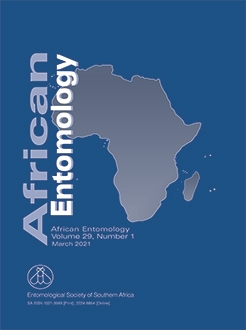Many human activities have an impact on the fauna and flora of the South African Grassland Biome, including agriculture, fire and urbanisation. Disturbances in grassland habitats often result in Hyparrhenia hirta, a native pioneer grass species, establishing dense stands. Here the assemblage composition, species richness and abundance of spiders associated with H. hirta tussocks was investigated at three grassland sites (annually burnt, suburban local road traffic and undisturbed control) in the central Free State Province of South Africa during winter 2015 and 2016. Further, inter-annual differences during a period of intense drought were evaluated. An increase in spider species richness, abundance and different assemblage composition with increased tussock height and basal circumference was expected, and we predicted these effects would differ between land use types. Overall, Tibellus spp. immatures (Philodromidae) and Poachelas striatus Haddad & Lyle, 2008 (Trachelidae) were the most abundant spider species, while Philodromidae and Gnaphosidae were the most abundant spider families at all three sites during both years. The most species-rich families were Gnaphosidae, Salticidae and Thomisidae. Over the two-year sampling period there was a significant decline in overall spider abundance (58.09 %) and species richness (28.17 %), which could be explained by the cumulative effects of a severe drought experienced in central South Africa during 2015 and 2016. Species richness and assemblage composition were influenced by tussock basal circumference and disturbance effects, but not by tussock height. Several species were associated with the control site, while certain diversity metrics of the burnt and road verge sites were more stable, pointing to the importance of primary productivity in the former and water in the latter, for spider diversity. Trade-offs related to disturbance need to be carefully considered when developing management strategies for biodiversity.
How to translate text using browser tools
23 March 2021
Tussock Circumference, Land Use Type and Drought Variably Influence Spider Assemblages Associated with Hyparrhenia hirta Grass Tussocks
C.R. Haddad,
S.H. Foord,
L. Whitehead
ACCESS THE FULL ARTICLE
It is not available for individual sale.
This article is only available to subscribers.
It is not available for individual sale.
It is not available for individual sale.

African Entomology
Vol. 29 • No. 1
March 2021
Vol. 29 • No. 1
March 2021
abundance
grassland
hunters
South Africa
species
web-builders





